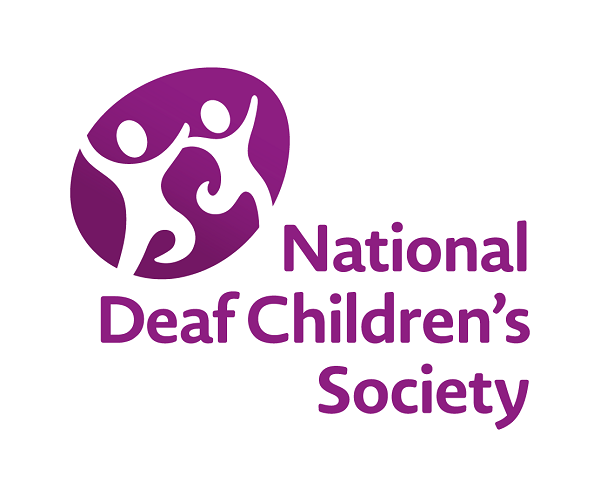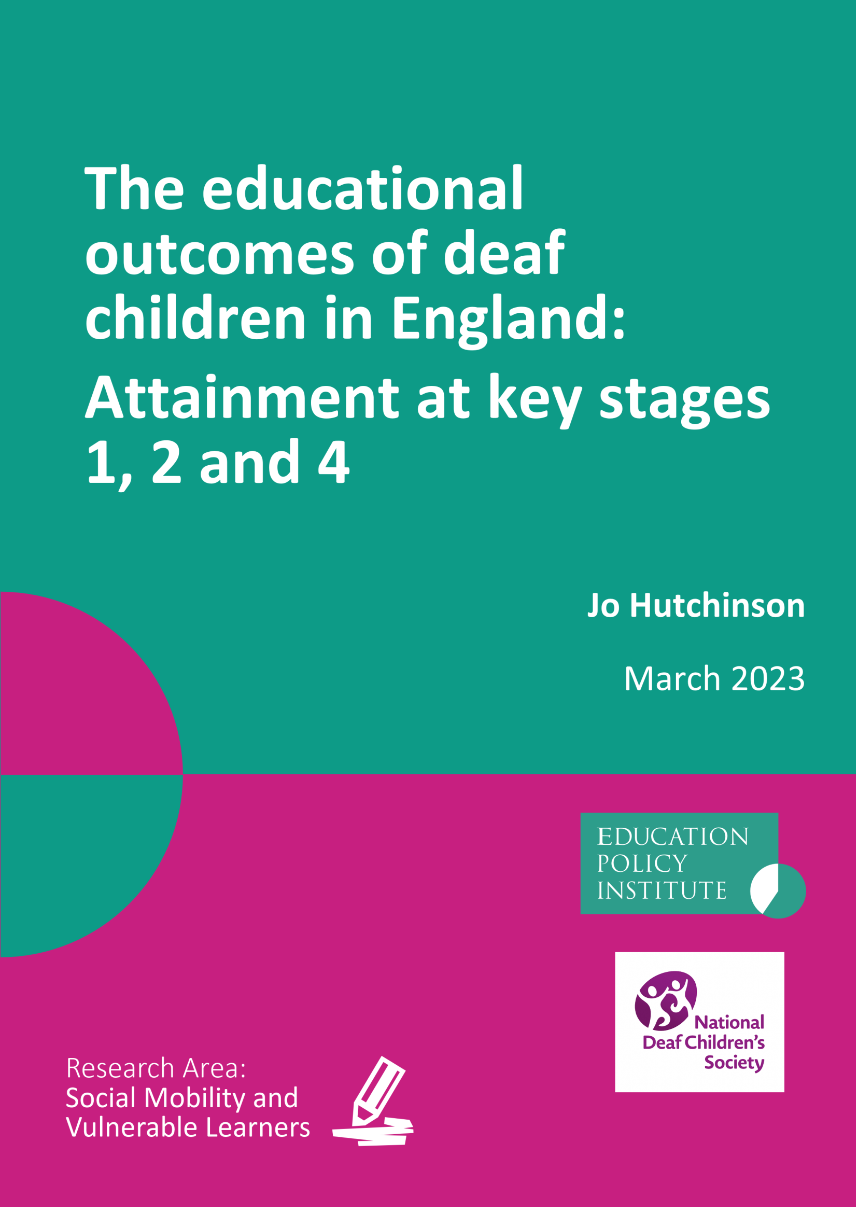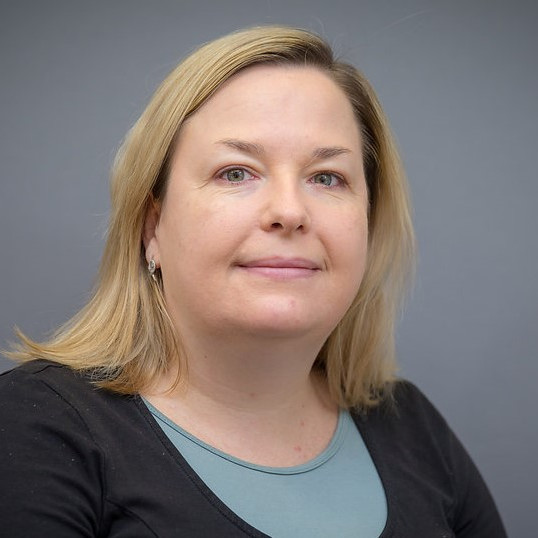EPI’s report into the attainment of deaf children in England reveals considerable attainment gaps facing deaf children during their time in education. To counter this, the report recommends enhanced funding and support for deaf pupils, as well as those with other special needs, alongside a broader strategy to tackle child poverty.
The report, in partnership with the National Deaf Children’s Society (NDCS), found deaf children were on average almost a year and a half (17.5 months) of learning behind their classmates, who did not have any special needs, by their GCSEs in 2019. This lost learning typically results in deaf pupils losing out on more than a whole grade in each of the vital GCSE subjects of maths and English, impacting future career paths and earnings.
Whilst the learning losses experienced by deaf children become most pronounced during Key Stage 4, due to GCSE’s demanding more from pupils, they begin at a young age. For younger deaf pupils at Key Stage 1, 8.8 months of learning is lost, whilst those at Key Stage 2 lose 12 months.
At GCSE, this deaf attainment gap can be likened to the disadvantage gap facing socio-economically disadvantaged pupils (those eligible for free school meals at some point within the last 6 years). In 2019, socio-economically disadvantaged GCSE pupils faced an average attainment gap equivalent to 18.1 months of learning, only slightly larger than the 17.5 months experienced by deaf pupils. Concerningly, on average, these pupil groups attained lower grades than almost two thirds of all pupils in 2019.
When these pupil characteristics combine, however, the report reveals a particularly concerning outlook for deaf pupils who were eligible for the Pupil Premium. In 2019, 33% of deaf children at KS4 were socio-economically disadvantaged, compared with 23% of children with no special needs. Deaf pupils who were also socio-economically disadvantaged, on average, faced a gap of almost three years (34 months); almost twice as large as the gap faced by solely deaf pupils.
Whilst the average GCSE grade achieved by non-deaf, non-disadvantaged pupils stood at 5.0, which is benchmarked as a ‘good GCSE pass’ grade, the average grade achieved by pupils that were both deaf and disadvantaged was halved to only 2.5. The research illustrates the far greater disruption to learning experienced by pupils who are both deaf and disadvantaged.
The report also finds geographic disparities within the attainment of deaf children. For instance, deaf children living in largely affluent areas, such as Wokingham, have average GCSE attainment that compares favourably with children that have no recorded special educational needs or disabilities (SEND). Comparatively in Nottingham, which features some of the more deprived areas within England, deaf children attained lower grades than three quarters of pupils nationally.
Only moderate improvements were found to have been made in closing the deaf attainment gap between 2011 and 2019, with around 3 months of learning having been restored to deaf children by Key Stage 4. These improvements accounted for a 0.2 grade reduction in the attainment gap, and were revealed to have focused most heavily on non-disadvantaged and female deaf pupils.
To combat the barriers facing deaf children throughout their education, the report recommends:
- More effective, holistic support packages should be developed and utilised by government, schools and local authorities, that better recognise and support the varied and often complex needs of deaf children.
- The national funding formula should be improved, to take account of multiple additional needs of the same individual child, instead of simply summing the numbers of pupils with each separate additional need.
- Rationalising the high needs funding formula would be beneficial in reducing geographic disparities in the attainment of deaf children, so that local authorities receive funds calculated according to the needs of their population, rather than historical expenditure.
- Basing amounts received through the high needs budget on the actual cost of providing necessary services.
- Due to the link between poverty and worsened attainment of deaf pupils, a cross-government child poverty strategy must be introduced, to tackle child poverty at its root causes.
Read the report in full here:
You can also access a breakdown of our Local Authority level analysis here: Deaf children’s attainment 2011 to 2019 LA tables publication
Key Findings:
What is the deaf attainment gap?
- The attainment gap facing deaf children was equivalent to:
- 8 months of learning at KS1
- 12 months at KS2
- 5 months at KS4
- On average, this leaves deaf children 1.3 grades behind in maths and English at GCSE.
- Learning gaps grow as children get older and the school curriculum expects a greater volume and complexity of knowledge.
- The attainment gap facing deaf pupils at GCSE (17.5 months) is similar to the attainment gap that faces disadvantaged pupils at GCSE (18.1 months).
- Deaf children and disadvantaged children eligible for free school meals in the last six years both had attainment that was lower than almost two thirds of pupils in 2019.
Is the deaf attainment gap closing?
- The trend in the attainment gap for deaf children shows moderate improvement from 2011 to 2019 at KS1, KS2 and KS4; by the time pupils sit their GCSEs, this improvement is equivalent to a reduction in the gap of 0.2 grades per subject, or 3.0 months of learning.
- This report cannot comment on whether these improvements have been sustained since 2019.
- These headline deaf attainment figures mask wide variation in outcomes for deaf pupils, which sheds important light on the complexities surrounding the needs of deaf children.
Are certain deaf pupils more impacted than others?
- Improvements in the GCSE grades of deaf children have been concentrated among non-disadvantaged deaf pupils, as well as among deaf girls.
- Pupils that are both deaf and disadvantaged achieved an average GCSE grade per subject of 2.5, behind 77% of pupils, compared with an average grade 5.0 for pupils who were neither deaf nor disadvantaged.
- Comparing the attainment of deaf and disadvantaged pupils against non-deaf and non-disadvantaged pupils reveals a gap equivalent to almost three years of learning (33.7 months) in 2019.
- Deaf pupils who speak or sign English as an additional language (EAL) faced a double challenge when communicating in comparison with their hearing and English-speaking peers and teachers. This was reflected in GCSE attainment that was behind two thirds of pupils, with a mean grade of 2.7.
- Deaf Gypsy/Roma children had the lowest GCSE attainment with an average grade per subject of 0.7, placing them behind 94% of pupils.
- Deaf Black Caribbean pupils had the second lowest GCSE attainment, with an average grade of 2.6, behind three quarters of pupils nationally.
- Deaf Indian pupils, on the other hand, had the second highest mean grade of 3.8, with deaf Chinese pupils accruing the highest mean grade of 5.3.
- Across local authorities, deaf attainment ranged from the 21st percentile (lower than more than three quarters of children) in Nottingham up to the 58th percentile in Wokingham, which is 5 percentiles above the national average for children with no SEND.
This report has been supported by the National Deaf Children’s Society (NDCS).

The National Deaf Children’s Society is the leading charity dedicated to creating a world without barriers for deaf children and their families.
Three babies are born deaf in the UK every day. There are more than 50,000 deaf children in the UK. We help them thrive by providing impartial, practical and emotional support, and by challenging governments and society to meet their needs.
For more information on their work please, visit ndcs.org.uk. For further support, parents, deaf children and deaf young people can contact NDCS via their Helpline on 0808 800 8880 (voice and text), on InterpreterNow (co.uk/ndcs), by email on helpline@ndcs.org.uk or through online chat at www.ndcs.org.uk/livechat.


